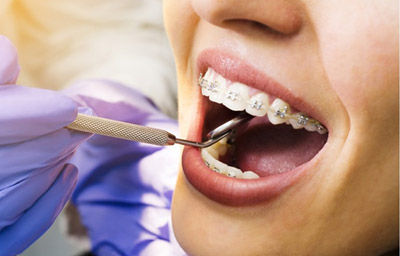The Buzz on Causey Orthodontics
Table of ContentsCausey Orthodontics Can Be Fun For EveryoneFacts About Causey Orthodontics RevealedExamine This Report about Causey OrthodonticsThe Definitive Guide for Causey OrthodonticsThe Definitive Guide to Causey Orthodontics
Ignoring occlusal partnerships, it was common to remove teeth for a range of oral concerns, such as malalignment or overcrowding. The concept of an intact teeth was not commonly valued in those days, making bite relationships appear unimportant. In the late 1800s, the principle of occlusion was crucial for developing reputable prosthetic substitute teeth.As these ideas of prosthetic occlusion proceeded, it came to be an important device for dentistry. It was in 1890 that the job and impact of Dr. Edwards H. Angle began to be felt, with his payment to modern orthodontics specifically significant. Concentrated on prosthodontics, he educated in Pennsylvania and Minnesota before directing his interest in the direction of dental occlusion and the therapies required to maintain it as a regular condition, hence ending up being recognized as the "daddy of modern orthodontics".

The idea of excellent occlusion, as proposed by Angle and integrated right into a classification system, made it possible for a shift in the direction of dealing with malocclusion, which is any kind of variance from typical occlusion. Having a full collection of teeth on both arches was highly demanded in orthodontic therapy as a result of the need for exact relationships between them.
8 Simple Techniques For Causey Orthodontics
As occlusion came to be the crucial priority, face proportions and looks were disregarded - orthodontist expert. To accomplish suitable occlusals without making use of outside pressures, Angle proposed that having ideal occlusion was the most effective method to gain optimal facial aesthetic appeals. With the passing away of time, it ended up being rather apparent that also an outstanding occlusion was not appropriate when considered from an aesthetic factor of view
Charles Tweed in America and Raymond Begg in Australia (who both examined under Angle) re-introduced dentistry removal right into orthodontics throughout the 1940s and 1950s so they could enhance facial esthetics while also guaranteeing far better security concerning occlusal connections. In the postwar period, cephalometric radiography begun to be used by orthodontists for determining adjustments in tooth and jaw placement triggered by growth and therapy. It came to be evident that orthodontic treatment can readjust mandibular advancement, causing the formation of practical jaw orthopedics in Europe and extraoral force measures in the US. These days, both practical home appliances and extraoral tools are applied around the world with the goal of amending growth patterns and kinds. Consequently, seeking true, or at the very least boosted, jaw partnerships had come to be the main purpose of therapy by the mid-20th century.
The smart Trick of Causey Orthodontics That Nobody is Talking About
 The American Journal of Orthodontics was developed for this function in 1915; prior to it, there were no scientific purposes to comply with, neither any type of precise category system and brackets that did not have features. Till the mid-1970s, braces were made by covering steel around each tooth. With improvements in adhesives, it became possible to rather bond metal brackets to the teeth.
The American Journal of Orthodontics was developed for this function in 1915; prior to it, there were no scientific purposes to comply with, neither any type of precise category system and brackets that did not have features. Till the mid-1970s, braces were made by covering steel around each tooth. With improvements in adhesives, it became possible to rather bond metal brackets to the teeth.This has actually had purposeful results on orthodontic therapies that are carried out consistently, and these are: 1. Correct interarchal relationships 2. Correct crown angulation (suggestion) 3.
The advantage of the design depends on its bracket and archwire combination, which requires only minimal wire flexing from the orthodontist or medical professional (affordable orthodontist near me). It's appropriately called hereafter function: the angle of the slot and thickness of the bracket base ultimately determine where each tooth is situated with little demand for added control
The Best Guide To Causey Orthodontics
Both of these systems utilized identical braces for every tooth and demanded the flexing of an archwire in three airplanes for locating teeth in their wanted settings, with these bends determining supreme placements. When it involves orthodontic home appliances, they are separated into 2 types: removable and dealt with. Removable devices can be handled and off by the person as needed.

Thus, mostly all contemporary fixed appliances can be considered variants on this edgewise device system. Early 20th-century orthodontist Edward Angle made a significant contribution to the world of dental care. He produced four distinctive home appliance systems that have been used as the basis for several orthodontic therapies today, barring a couple of exceptions.
Some Known Incorrect Statements About Causey Orthodontics

The wire ended in a thread, and to relocate ahead, a flexible nut was utilized, which enabled a boost in circumference. By ligation, each specific tooth was affixed to this extensive archwire (best orthodontist near me). Due to its minimal variety of motion, Angle was unable to attain accurate tooth positioning with an E-arch
These tubes held a firm pin, which might be repositioned at each consultation in order to move them in place. Referred to as the "bone-growing home appliance", this contraption was supposed to encourage much healthier bone growth as a result of its capacity for transferring pressure directly to the origins. Nevertheless, applying it verified problematic in reality.
Comments on “Little Known Facts About Causey Orthodontics.”